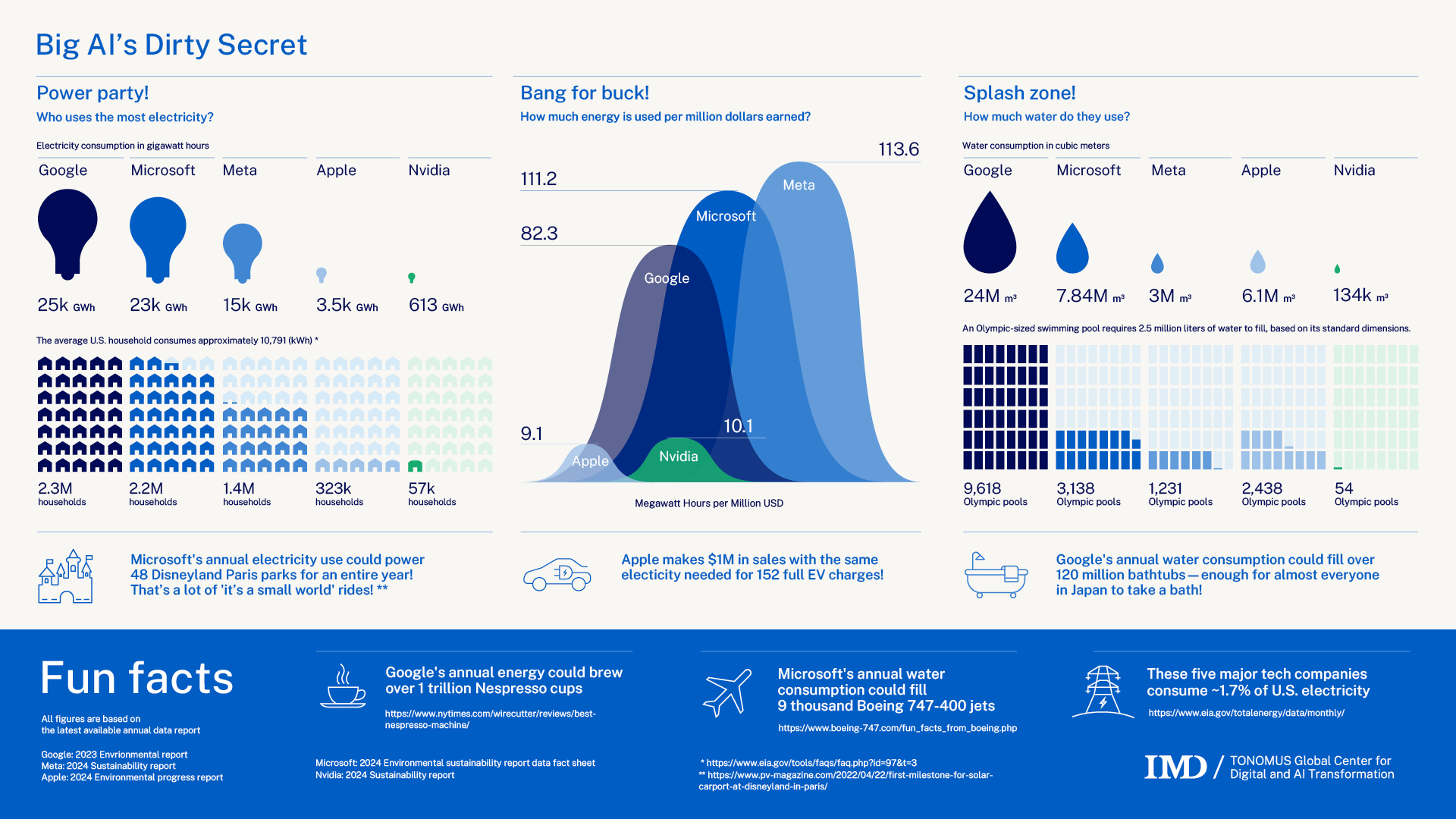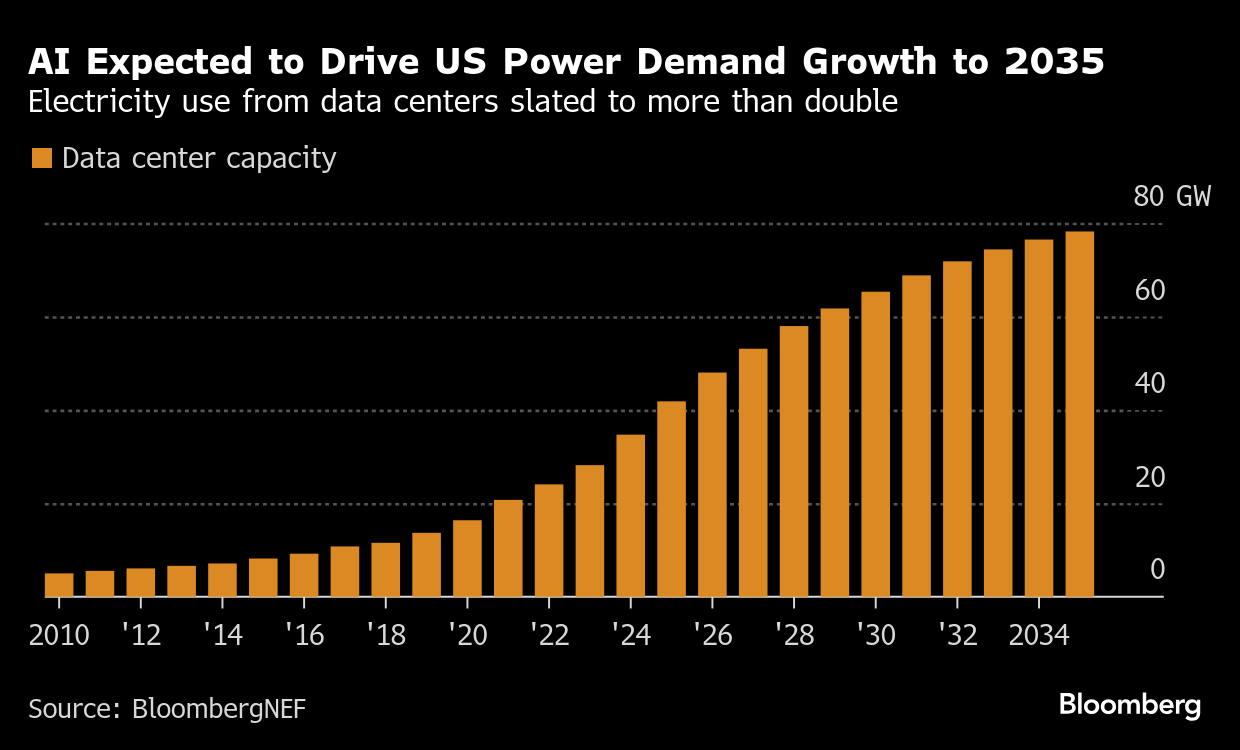The AI data centre boom: AI hyperscalers have hyperscaled demands for key resources
The AI-driven surge in data centres is reshaping global infrastructure at breakneck speed, with capacity set to explode by 20,800 MW between 2025 and 2027.
Hyperscalers like Microsoft (NYSE: MSFT), Amazon (NYSE: AMZN), and Google (NASDAQ: GOOGL) are leading the charge, but this isn't just about chips and servers—it's a massive drain on critical resources like copper, aluminium, nuclear power (and uranium), and water for cooling.
We've seen commodity crunches before, but this feels like a perfect storm: geopolitical tensions, delayed projects, with competing pulls from EVs and renewables straining supplies.
The market's treating this as a tech-only play, but we at MPC Markets see big opportunities in the underappreciated enablers, where "emotive, simplistic" narratives have created cheap entry points for quality assets.
As always in these cycles, it's not binary. Structural demand from AI will outlast short-term wobbles. In this wire, we'll dissect the impact on four key resources, ranked by deficit depth, data centre ties, and upside potential. Given the rapid rise of AI, let's lean on the bull case.
Ranking by potential “supply squeeze”
We've prioritised based on supply squeezes, AI linkages, and risk-reward. Nuclear/uranium tops the list for its direct deals, while water lags as a longer-term hold.
- Power (Nuclear & Uranium): Prime pick—AI firms are sealing nuclear pacts for baseload power, widening deficits and pushing prices to $150/lb in bull scenarios.
- Copper: Close second—data centres devour copper for wiring, deepening global shortfalls and eyeing $10,000+/tonne, ($12,000+/tonne if the Chinese economy starts to compete for resources)
- Aluminium: Steady contender—power gear demand flips surpluses to deficits sooner, but geopolitics adds volatility.
- Water: Solid tailwind from scarcity, but HOLD for now amid muted momentum and local strains.

1. Power (nuclear & uranium): AI deals fuelling uranium tightness
Data centres are energy vampires—global power demand could double in five years, with AI alone requiring 30-43 GW by 2026-2027 from 43 million Nvidia chips.
Nuclear steps up as the reliable, low-carbon fix: Microsoft's $1.6B restart of Three Mile Island (835 MW), Amazon's 350 MW SMR with X-energy, Google's 300 MW SMRs, and expansions in China (29 GW needed by 2035) and the US (119 GW). Worldwide, reactor demand grows 2-5% annually.
Supply can't keep pace: Production hits 73 million lbs U3O8 in 2025, but long delays (e.g., Australia's Honeymoon to 2027) and Kazakhstan caps create structural deficits. Spot prices at $75-$100/lb through 2027, with upside to $150/lb if shortages bite.
We see explosive potential here—AI ties make it less correlated to broader markets, though reactor delays pose risks.

2. Copper: Data centre intensity compounding global supply plateaus
Copper is indispensable for data centre electrics—power distribution, wiring, busbars, connectors, and heat exchangers consume about 27 tonnes per MW, translating to 561,600 tonnes for the 20,800 MW buildout by 2027.
That's 2-3% of annual global consumption (25-28 million tonnes), stacked on top of 2.4-2.9% yearly growth from electrification and renewables. China's economic acceleration adds another layer, potentially boosting demand by over 23,300 tonnes in 2026 alone through stimulus-fuelled grids and manufacturing.
Supply is the weak link: Mine output is expected to peak around 2025-2026 amid declining ore grades, closures in Chile, and underinvestment, resulting in deficits of 3.6 million tonnes in 2024 that are projected to expand to 4.2-4.5 million by 2026-2027.
Inventories have plunged 44% since early 2025, covering a mere six days, while record-low treatment charges signal desperate miner operations. Political unrest in Peru and Chile exacerbates risks, turning this into a classic "whack-a-mole" scenario.
We forecast prices at $8,300-$9,500/tonne in 2025, surpassing $10,000 by 2026-2027—supercharged if AI and China align, but vulnerable to macro slumps such as property weakness.
3. Aluminium: Geopolitical tensions hastening deficits in power infrastructure
Aluminium underpins data centre power systems—transformers (0.5-1 tonne per MW), switchgear, cabling, and bus ducts could demand 10,400-20,800 tonnes for the upcoming 20,800 MW, on top of 1-1.8% base growth in transportation, construction, and renewables.
This concentrated surge overlaps with broader grid needs, where manufacturing lead times for transformers have doubled to over two years, risking widespread delays.
What was a surplus story is flipping: <580,000 tonnes in 2025 narrows to <1 million in 2026, then deficits of 72,000 tonnes by 2027—advanced by data centres and intensified by geopolitics.
US tariffs of up to 50% on China/EU/Mexico imports, the EU's full ban on Russian aluminium (once 20% of supply), and Europe's energy crises are curtailing smelters and fragmenting trade. Competition for low-carbon electricity between smelters and data centres adds another twist.
Prices likely range $2,000-$2,300/tonne in 2025, climbing to $2,500-$3,000 by 2027. The upside from tightness is real, but regional disparities (resilient US vs. strained Europe) and trade volatility make it less punchy than copper or uranium.
4. Water: Regional scarcity amplified, but momentum lags
Data centres' cooling demands are voracious—global usage rises from 543,000 tonnes in 2020 to over 725,000 by 2030 (a 20%+ near-term spike), exacerbating deficits in hotspots like the US Sun Belt, North China, Western Europe, and Southeast Asia, where shortfalls could hit 15-20% by 2027.
Overall demand grows 1% annually, driven by urbanisation and industry, with costs escalating 3-5% yearly amid climate volatility and infrastructure losses.
Our top picks for the data centre resource squeeze
Missed the AI hype? Skip overvalued tech—dive into these enablers at compelling levels amid "supply whack-a-mole."
ASX: BHP is the best all-rounder for the thematic, with both copper and uranium deposits in production globally. It's a little-known fact that BHP is Australia's largest domestic Uranium, as a by-product of the mine’s primary copper operations.
ASX: RIO is a good way to straddle the Copper and Aluminium demand, and while the water play ranks at the bottom of the list, there are some good US-based plays with the Invesco Water Resources ETF NYSE: PHO, or our favoured single stock play is Xylem NYSE: XYL — but we would wait for a pullback.
5 topics
5 stocks mentioned

